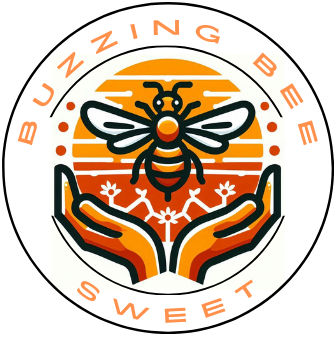Queen rearing is a critical aspect of beekeeping that can’t be overlooked. It’s all about raising the queens who balance the hive’s ecosystem in a remarkable way. Without these powerhouse ladies, there wouldn’t be new generations of bees, and productivity would drop significantly.
Strong queens are like the backbone of a thriving hive. They ensure the colony stays robust and prolific. Imagine them as CEOs of a company, steering the team towards success. A well-bred queen can boost honey production, improve temperament, and enhance disease resistance across the entire bee population.
Now, why should anyone care about queen rearing, especially if you’re serious about sustainable beekeeping? Well, focusing on queen rearing allows beekeepers to adapt to changing environmental conditions and address specific challenges like diseases or pests more effectively. It’s a way to build a legacy of bee health that keeps a colony thriving year after year.
Characteristics of an Ideal Breeding Stock
Looking to craft an all-star lineup for your hives? It starts with spotting the right traits in a queen bee. A couple of key indicators show whether a queen has what it takes to lead the colony like a champ.
- Start by checking her genetic blueprint. You want queens that consistently produce large, well-knit bee populations. Size and egg-laying capacity are big deals here. Queens with superior genetic diversity bring a wealth of advantages, including improved vitality and resistance perks.
- Speaking of resilience, the queen’s ability to ward off diseases and pests can be a game-changer. Seek out stocks known for their hardiness against common bee illnesses. This not only sustains individual health but lifts the overall vigor of the hive.
- Environmental adaptability matters too. Some queens thrive better in specific climates or geographical locations. Whether you’re in a hot, humid landscape or dealing with colder temperatures, choosing a queen adapted to your local setting helps the colony thrive.
Understanding these traits makes all the difference for future hive success. When armed with this knowledge, selecting breeding stock isn’t just a task, it’s a savvy and strategic move for any beekeeper.
Steps to Choosing the Best Breeding Stock
Choosing the right breeding stock involves more than just a quick glance. It’s an informed process that makes or breaks the future of your bee colonies. Here’s how to get it right.
- First off, get into assessment mode. Spend time observing potential queens in action. Look for their patterns, such as brood production and colony harmony. Season-long observations give a clear picture of her consistent performance.
- Then, dive into genetic details. Testing and documenting genetic traits helps you pinpoint the best candidates. While this might seem technical, the payoff in hive productivity and health is huge.
- Don’t go solo! Engage with experts in the field. Whether it’s through beekeeping communities or academic resources, their insights are invaluable. This network provides access to tried-and-true strategies and innovative methods worth considering.
Balancing these steps with up-to-date research ensures selections are sound. The effort invested in thorough evaluation reaps benefits in stronger and more resilient bee colonies.
Tips for Maintaining the Health and Quality of Selected Queens
Keeping your chosen queens in tip-top shape requires some dedication. Regular monitoring is essential. Performing consistent health checks ensures they remain robust and capable of sustaining the colony. Watch out for changes in egg-laying patterns or any signs of illness.
Nutrition is another cornerstone of queen health. Providing a balanced diet with necessary supplements can enhance their strength and longevity. This not only keeps the queens in prime condition but also supports the hive’s overall efficiency.
Creating a suitable environment goes hand-in-hand with nutrition. Make sure the habitat is conducive to breeding – this involves managing temperature, humidity, and providing ample space.
Maintaining a record of performance and health data helps refine future selections. Tracking this information builds a valuable resource for continuous improvement in breeding practices. It assists in identifying which aspects of care yield the best results.
Looking ahead, strategic planning ensures the sustainability and continued success of queen rearing efforts. Prioritize continuity by setting up a renewal plan, allowing for the introduction of fresh breeding stock as needed. This forward-thinking approach helps keep the hive thriving year after year.

This is a fantastic resource for beekeepers of all experience levels, thanks for this post.
In my own experience, I’ve found that focusing on gentleness is crucial, not only for safety but also for easy hive management. Your emphasis on consistent monitoring and record-keeping is excellent advice that I actively use. I’ve noticed a significant improvement in the overall quality of my queens since implementing a more rigorous selection process. I’ve had a lot of success breeding for honey production.
My question is: What are the most effective methods for integrating new queens from selected breeding stocks into established hives without encountering high rejection rates?